The end of World War II marked a turning point for Filipino literature. Emerging from the shadows of conflict, it began to reflect the nation’s struggles and aspirations. This period saw a shift from oral traditions to printed works, paving the way for a modern literary vision.
Post-war literature became a powerful tool for capturing the Filipino experience. It blended old traditions with new ideas, creating a unique voice. Writers explored themes of identity, resilience, and hope, shaping the cultural landscape of the Philippines.
Early influences, such as poetry and prose, played a crucial role in this transformation. These works laid the foundation for future innovations, inspiring generations of writers. The historical context of societal changes further fueled this creative evolution.
Writing became a repository of cultural work, preserving the nation’s stories and values. From novels to essays, Filipino literature flourished, offering a glimpse into the heart of a rebuilding nation. This era remains a testament to the power of words in shaping history.
Key Takeaways
- Filipino literature evolved significantly after World War II, transitioning from oral to printed traditions.
- Post-war works captured the Filipino experience, blending old traditions with modern ideas.
- Poetry and prose were foundational in shaping the literary landscape of the time.
- Societal changes post-war influenced the themes and styles of Filipino writing.
- Literature served as a cultural repository, preserving the nation’s identity and values.
Historical Context of the Post-War Philippines
The aftermath of World War II brought profound changes to the Philippines, reshaping its political and cultural landscape. The country, having endured immense destruction, faced the challenge of rebuilding while redefining its identity. This period marked a turning point, not just in governance but also in the way Filipinos expressed their collective experiences.
Political and Social Changes After WWII
Independence was officially granted to the Philippines on July 4, 1946, ending decades of colonial rule. This newfound freedom, however, came with its own set of challenges. The war had left the economy in ruins, and the government struggled to address widespread poverty and displacement.
Political reforms aimed at stabilizing the nation were introduced. For example, the Bell Trade Act tied the Philippine peso to the US dollar, influencing economic policies for years to come. These changes, while necessary, also sparked debates about sovereignty and self-governance.
Socially, the war had a lasting impact on the Filipino psyche. Communities came together to rebuild, fostering a sense of unity and resilience. This collective effort laid the groundwork for a cultural rebirth that would shape the century ahead.
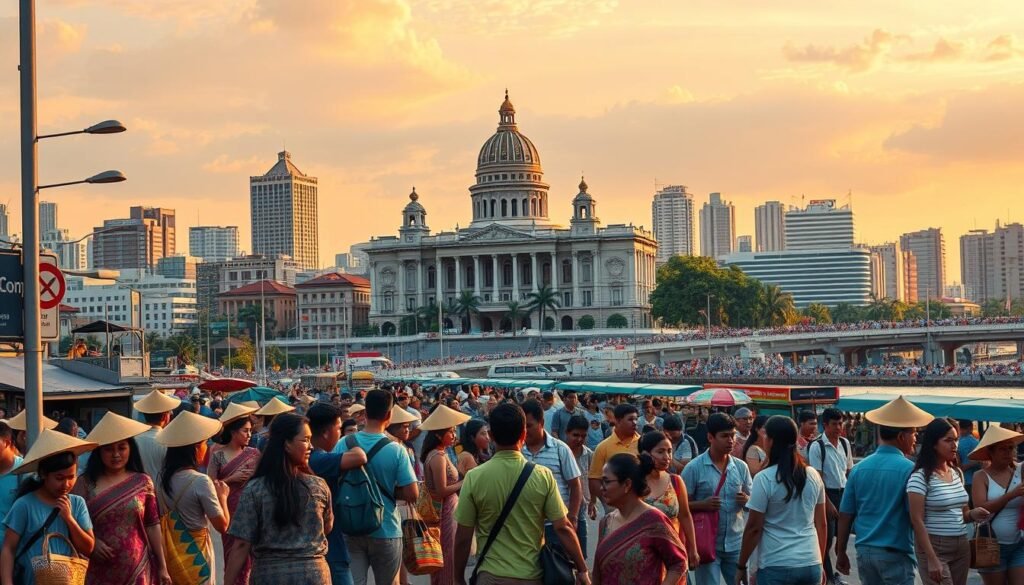
Cultural Rebirth and National Sentiment
The post-war era saw a surge in national pride, reflected in the arts and writing. Filipinos sought to preserve their heritage while embracing modern influences. This period became a fertile ground for creative expression, as artists and writers explored themes of identity and resilience.
State efforts, such as funding for cultural programs, played a role in this resurgence. Grassroots movements also emerged, encouraging local storytelling and traditional art forms. These initiatives helped redefine what it meant to be Filipino in a rapidly changing world.
For the reader, this era offered a window into the nation’s struggles and triumphs. Works from this time continue to inspire, serving as a reminder of the power of storytelling in shaping history.
Emergence of a New Literary Voice
The post-war period ignited a fresh wave of creativity in Filipino writing, blending tradition with modernity. This era marked a significant shift in how stories were told, reflecting the nation’s evolving identity. Writers began to explore themes of resilience, identity, and societal change, creating a unique voice that resonated deeply with readers.
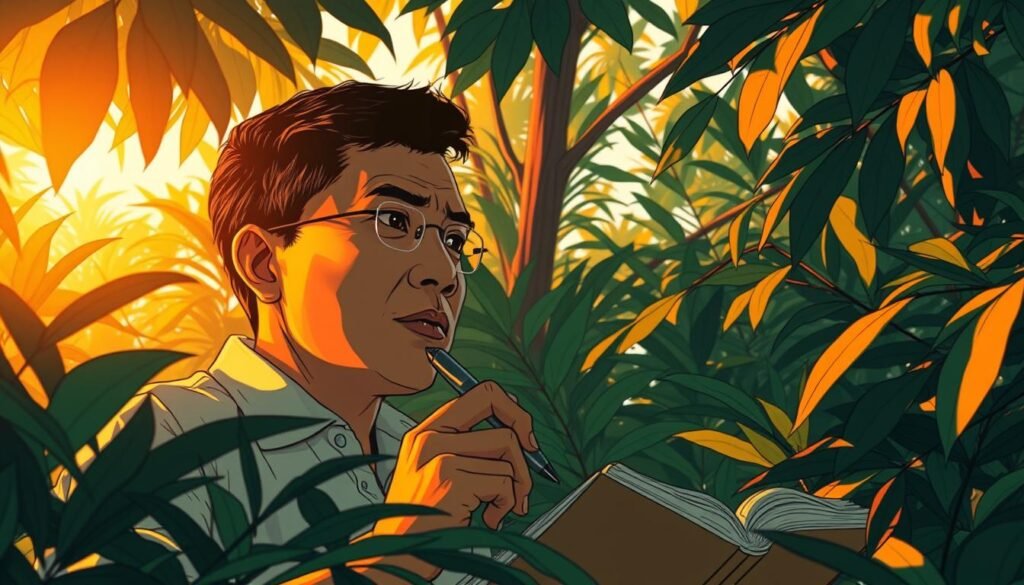
Transition from Pre-War Traditions
Before WWII, Filipino writing was heavily influenced by oral traditions and colonial narratives. Post-war, authors began to break free from these constraints, embracing a more personal and reflective style. This transition allowed for a deeper exploration of individual and collective experiences.
Key figures like Nick Joaquin and N.V.M. Gonzalez played pivotal roles in this transformation. Their works combined traditional storytelling with modern techniques, setting the stage for a new literary era. The word became a powerful tool for expressing the complexities of post-war life.
Influence of Global Literary Movements
Filipino authors were not isolated in their creative journey. They drew inspiration from global movements like Modernism and Social Realism. These influences encouraged experimentation with form and content, pushing the boundaries of traditional storytelling.
For example, the history of American and European literature introduced new narrative techniques. Filipino writers adapted these methods to address local issues, creating works that were both globally relevant and deeply rooted in their culture. This fusion of styles gave rise to a distinct literary voice that continues to inspire today.
The transformative power of the written word became evident as authors like F. Sionil José used their craft to critique societal norms and advocate for change. Their contributions not only shaped the literary landscape but also influenced national consciousness.
Filipino Literature: Shaping Identity and Modern Thought
In the wake of World War II, Filipino writers found their voice in a world rebuilding itself. Their works became a mirror reflecting the nation’s struggles, aspirations, and evolving identity. This period saw literature transform into a powerful tool for social critique and national healing.
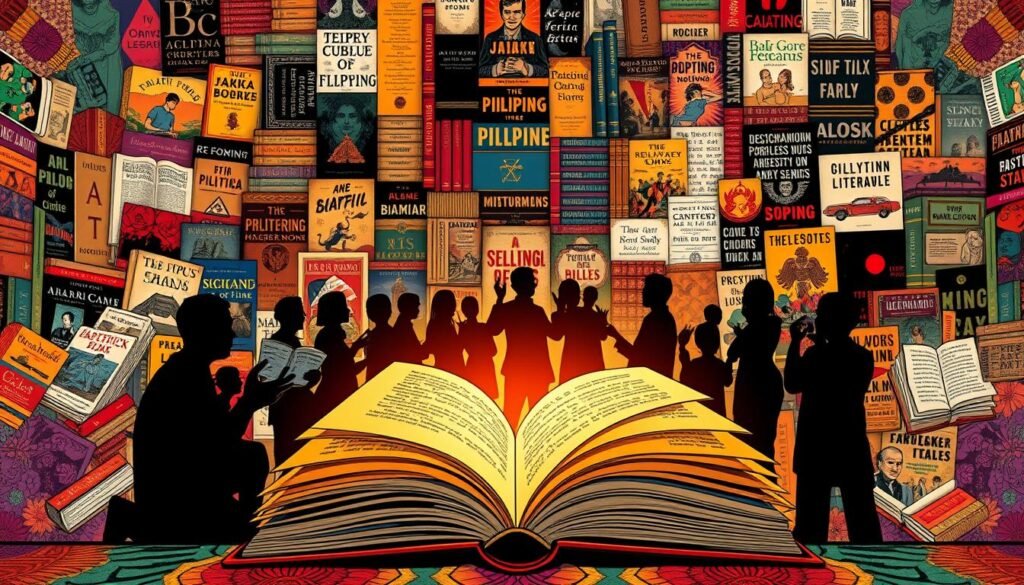
Literature as a Tool for Social Critique
Filipino writers used their craft to challenge societal norms and political ideologies. Works like F. Sionil Jose’s Rosales Saga exposed the injustices of elitism and social inequality. These narratives resonated deeply, sparking conversations about reform and justice.
Carlos Bulosan’s America Is In The Heart highlighted the struggles of early Asian-American immigrants. It bridged local experiences with a broader world context, making it a cornerstone of post-war writing. Such works showcased the writer’s role in shaping public discourse.
“The writer is the conscience of society, reflecting its flaws and aspirations.”
The Role of Creative Expression in National Healing
Post-war literature also served as a medium for healing. Writers like Nick Joaquin explored themes of resilience and identity, helping Filipinos reconnect with their heritage. Their works became a form of therapy, offering hope in a time of uncertainty.
Poetry, drama, and prose were reimagined to address the nation’s wounds. These creative forms allowed Filipinos to process their collective trauma and envision a brighter future. The writer became a healer, using words to mend a fractured society.
| Work | Author | Impact |
|---|---|---|
| Rosales Saga | F. Sionil Jose | Exposed social injustices |
| America Is In The Heart | Carlos Bulosan | Highlighted immigrant struggles |
| The Woman Who Had Two Navels | Nick Joaquin | Explored identity and resilience |
Through innovative forms and powerful narratives, Filipino writers reshaped the literary landscape. Their works remain a testament to the enduring power of the written word in shaping identity and modern thought.
Influential Filipino Authors and Literary Figures
The post-war era introduced a new generation of Filipino authors who reshaped the nation’s storytelling. These writers captured the complexities of a rebuilding society, blending tradition with modern narratives. Their works became a cornerstone of Filipino fiction, reflecting both regional and national identities.
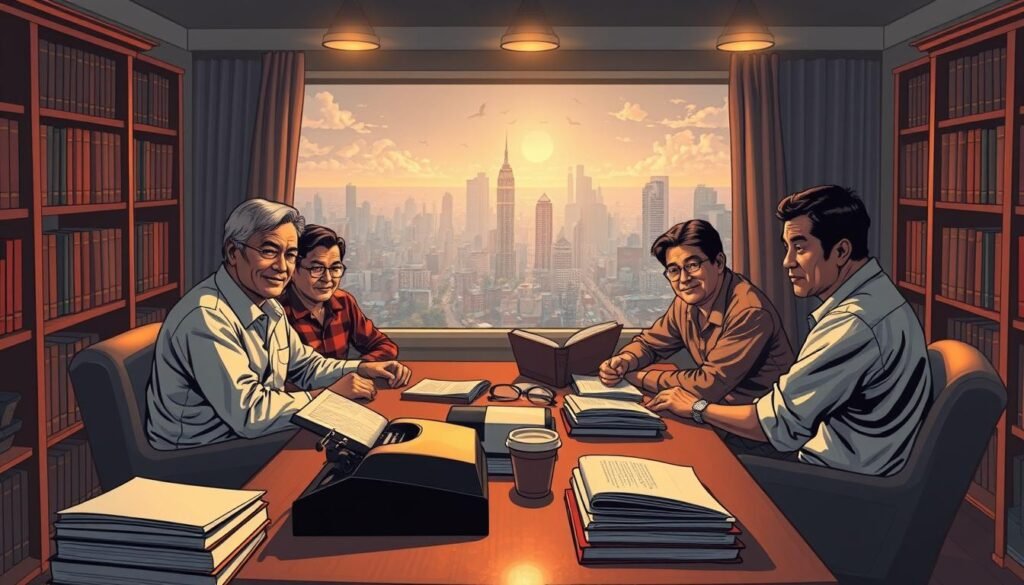
Notable Names and Their Contributions
F. Sionil Jose stands out as a towering figure in post-war literature. His Rosales Saga, a five-volume series, spans a century of Filipino history. Translated into 22 languages, it explores themes of social injustice and resilience. Jose’s work remains a testament to the power of text in addressing societal issues.
Nick Joaquin, another luminary, won the National Artist award for literature. His novel The Woman Who Had Two Navels delves into identity and cultural heritage. Joaquin’s mastery of language and storytelling continues to inspire writers today.
Regional Variations and Voices
Filipino authors also drew from their regional roots, enriching the national narrative. Writers like N.V.M. Gonzalez and Lualhati Bautista brought unique perspectives to their works. Gonzalez’s stories often reflected rural life, while Bautista’s novels tackled urban struggles and gender issues.
These regional voices highlight the diversity of Filipino tradition. They show how local experiences can shape a broader national identity. Their contributions remain vital to understanding the Filipino experience.
| Author | Notable Work | Impact |
|---|---|---|
| F. Sionil Jose | Rosales Saga | Explored social injustices |
| Nick Joaquin | The Woman Who Had Two Navels | Examined identity and heritage |
| N.V.M. Gonzalez | The Bamboo Dancers | Captured rural Filipino life |
| Lualhati Bautista | Dekada ’70 | Addressed urban and gender issues |
Through their innovative use of language and narrative, these authors created works that resonate across generations. Their stories remain a vital part of Filipino fiction, offering insights into the nation’s past and present.
Thematic Evolution in Post-War Writing
The years following World War II saw Filipino writing evolve into a mirror of the nation’s soul. This period was marked by a shift in themes, reflecting the rapidly changing socio-cultural landscape. Writers began to explore new ways of storytelling, blending tradition with innovation.
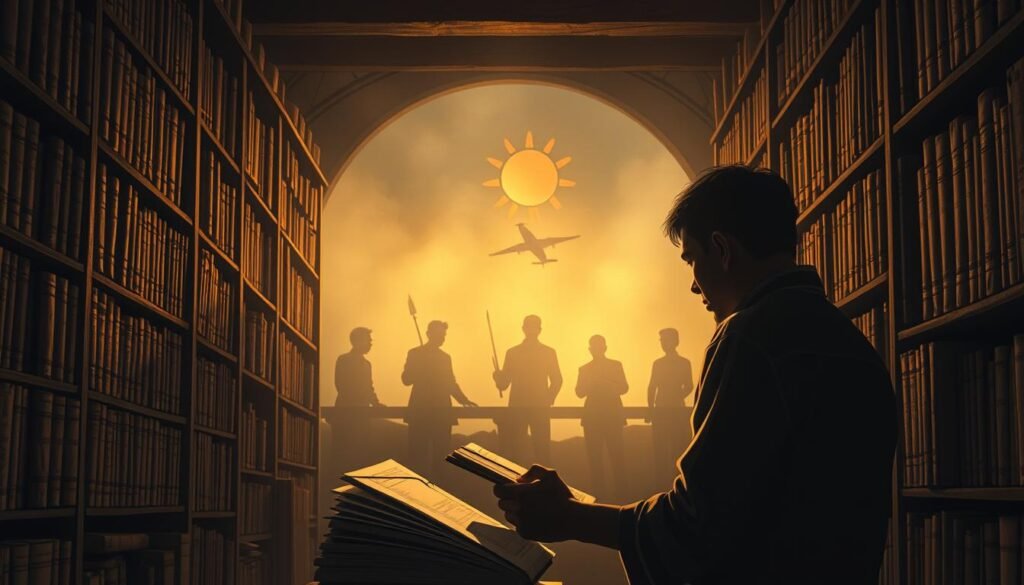
Social Realism and National Identity
Social realism emerged as a dominant style, capturing the struggles and aspirations of everyday Filipinos. Writers used their craft to critique societal norms and highlight issues like poverty and inequality. This approach provided a new definition of storytelling, one rooted in lived experiences.
Works like F. Sionil Jose’s Rosales Saga became iconic for their portrayal of social injustices. These narratives resonated deeply, offering a study of the nation’s identity. Through such works, writers not only documented history but also inspired change.
Experimental Forms and Narrative Innovation
The post-war era also saw a move towards experimental narrative forms. Authors began to challenge traditional storytelling techniques, embracing fragmented structures and unconventional plots. This shift allowed for a deeper exploration of complex themes.
Writers like Nick Joaquin experimented with style, blending myth and reality. Their works pushed the boundaries of what was considered literature, offering fresh perspectives. These innovations provided new ways for readers to engage with stories.
Over time, these experimental forms influenced the broader literary field. They encouraged a reevaluation of storytelling techniques, paving the way for future generations of writers. This era remains a testament to the power of creativity in shaping cultural narratives.
To learn more about the evolution of storytelling, explore this guide to ancient Filipino scripts.
Exploring Literature
Filipino writers in the post-war years grappled with the evolving meaning of their craft. The term “literature” became a subject of debate, as critics and educators sought to define its boundaries. This period marked a shift in how storytelling was perceived, blending traditional forms with modern ideas.
Defining “Literature” in the Filipino Context
In the Philippines, the term “literature” has always been fluid. Post-war writers questioned what truly constitutes literary merit. Was it the way a story reflected societal struggles? Or was it the artistic idea behind the narrative? These questions shaped the literary landscape.
Over the years, the definition expanded to include oral traditions, regional dialects, and experimental forms. This inclusivity allowed Filipino writers to explore diverse themes while staying rooted in their cultural identity. The way literature was understood became a reflection of the nation’s evolving consciousness.
Artistic Merit and Canon Formation
The formation of a literary canon was another critical idea in post-war writing. Critics debated which works deserved recognition and why. Factors like cultural relevance, narrative innovation, and emotional depth played a role in determining a work’s value.
For example, F. Sionil Jose’s Rosales Saga challenged traditional terms of storytelling. Its exploration of social injustice earned it a place in the canon. Similarly, Nick Joaquin’s works redefined the way literature could capture the Filipino spirit.
These discussions highlight the dynamic nature of literary evaluation. Over years, the canon has evolved, reflecting changing societal values and artistic priorities. This ongoing process ensures that Filipino literature remains a vibrant and relevant term in the global literary scene.
To delve deeper into the significance of storytelling, explore this guide to the study of literature.
The Role of Poetry, Drama, and Prose
After World War II, Filipino creators began to redefine traditional storytelling methods. The post-war era saw a shift in how poetry, drama, and prose were used to reflect societal changes. Writers experimented with new techniques, blending classic forms with innovative narratives.
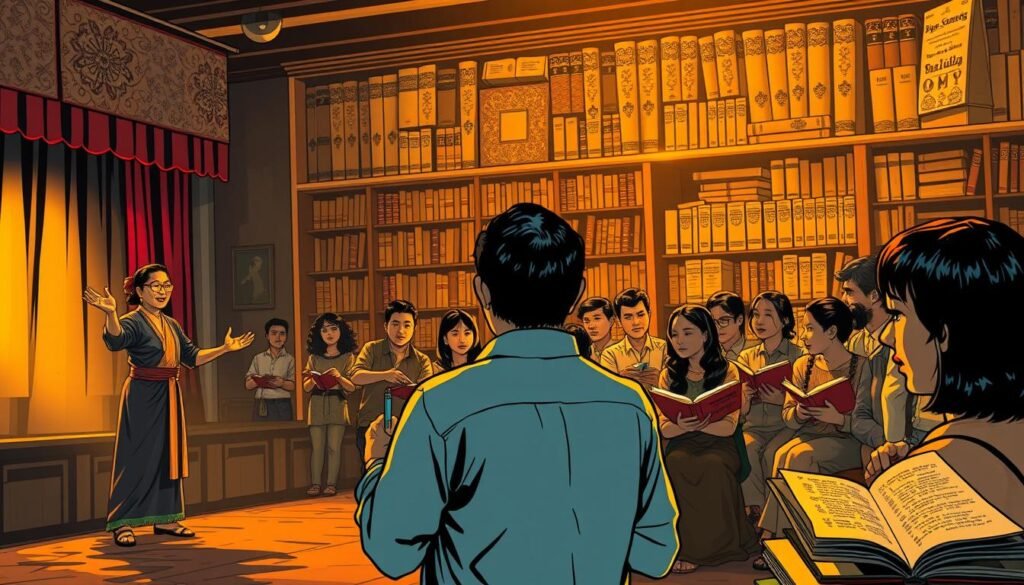
Traditional Genres Reimagined
Poetry, once rooted in strict forms, embraced free verse and emotional depth. Writers like Amado V. Hernandez used poetry to critique social injustices. His Isang Dipang Langit became a powerful piece that resonated with many.
Drama also evolved, moving from traditional plays to experimental theater. Works like Wilfrido Ma. Guerrero’s Wanted: A Chaperon showcased humor while addressing societal norms. These plays became a review of post-war Filipino life.
Modern Techniques and Storytelling
Prose saw significant changes, with authors adopting fragmented narratives and stream-of-consciousness techniques. Nick Joaquin’s The Woman Who Had Two Navels is a prime example. It blends myth and reality, redefining the genre of historical fiction.
Short stories also gained prominence, with writers like N.V.M. Gonzalez capturing rural life in vivid detail. His The Bamboo Dancers is a piece that remains influential today.
“The writer’s role is to mirror society, revealing its flaws and aspirations.”
These innovations not only transformed storytelling but also influenced how Filipinos viewed their culture. For a deeper dive into the evolution of these forms, explore this guide to poetry, drama, and prose.
Over time, these changes have shaped the way we understand and appreciate Filipino storytelling. The post-war era remains a testament to the power of creativity in redefining traditional genres.
Global Influences and Comparative Literary Trends
Filipino writing after World War II became a bridge between local traditions and global influences. This period saw Filipino authors engaging with international literary movements, creating a rich tapestry of narratives that reflected both their heritage and the world around them. The exchange of ideas between Filipino writers and their global counterparts deepened, shaping the meaning and structure of their works.
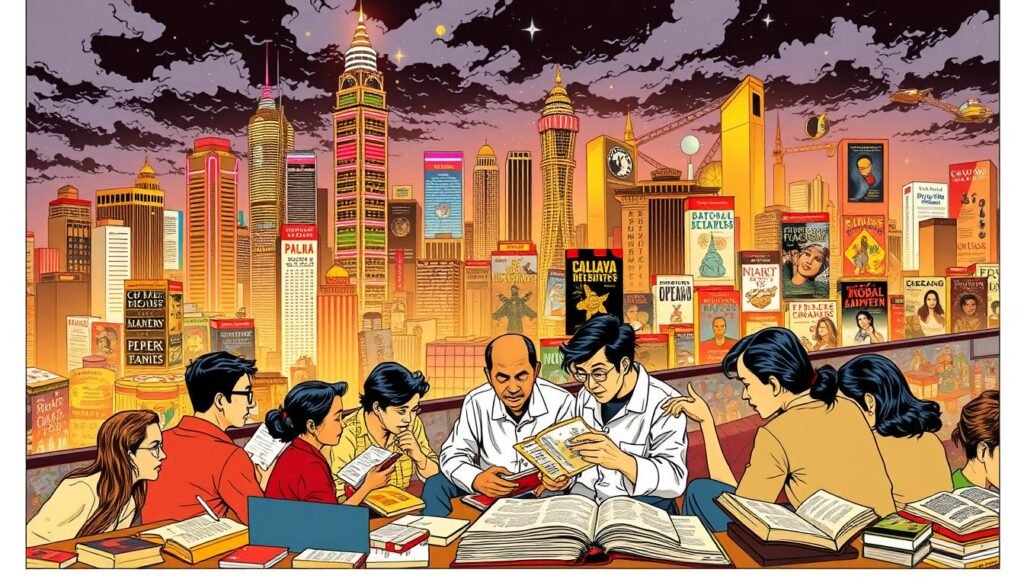
Transnational Dialogues in Literature
Post-war Filipino authors participated in transnational dialogues, drawing inspiration from global trends. Writers like Nick Joaquin and F. Sionil Jose incorporated elements of Western modernism and social realism into their works. These influences allowed them to explore universal themes while staying rooted in Filipino culture.
For example, Joaquin’s The Woman Who Had Two Navels blends myth and reality, a technique inspired by global literary movements. This fusion of styles gave Filipino stories a unique voice, resonating with both local and international audiences.
Intersections with Asian and Western Traditions
Filipino literature also intersected with broader Asian and Western traditions. Writers like Carlos Bulosan highlighted the struggles of Filipino immigrants in the U.S., bridging local experiences with a global context. His America Is In The Heart remains a powerful source of insight into the immigrant experience.
In drama, playwrights like Wilfrido Ma. Guerrero adapted Western theatrical techniques to address Filipino societal issues. These cross-cultural exchanges enriched the meaning of Filipino storytelling, making it a vital part of the global literary dialogue.
“Literature is the mirror of society, reflecting its struggles and aspirations across borders.”
- Filipino writers embraced global influences, blending them with local traditions.
- Transnational dialogues shaped the narrative structure and themes of post-war works.
- Intersections with Asian and Western traditions enriched Filipino storytelling.
- Comparative literature studies highlight the dynamic interplay between local and global narratives.
To explore how Filipino literature fits into the broader context of global storytelling, visit this guide to comparative literature.
Adaptation and Transformation in Media
The digital revolution has reshaped how Filipino stories are told and consumed. From traditional print to dynamic digital platforms, the way we engage with narratives has evolved dramatically. This transformation has not only expanded access but also redefined the creative process for writers and artists alike.

From Print to Digital Platforms
Print media once dominated the literary landscape, but the rise of digital platforms has changed the game. Books, poems, and novels are now accessible with just a click. This shift has democratized storytelling, allowing more voices to be heard.
E-books and online journals have become popular, offering convenience and affordability. Writers can now publish their work independently, bypassing traditional gatekeepers. This freedom has led to a surge in diverse and experimental forms of art.
New Media as a Literary Outlet
Social media, blogs, and podcasts have emerged as powerful tools for literary expression. These platforms allow writers to connect directly with their audience, fostering a sense of community. Poems shared on Instagram or novels serialized on blogs are examples of this trend.
Interactive storytelling, such as webcomics and multimedia projects, has also gained traction. These formats blend art and narrative, creating immersive experiences for readers. The body of work produced in this space is vast and varied, reflecting the creativity of modern storytellers.
To explore how media adaptation continues to influence storytelling, visit this guide to media adaptation.
Preservation and Criticism of Literary Heritage
The preservation of Filipino literary heritage has become a cornerstone of cultural identity. Through archiving and critical analysis, the nation ensures that its stories, both written and oral, remain accessible to future generations. This process not only safeguards the past but also enriches the present, offering insights into the Filipino experience.
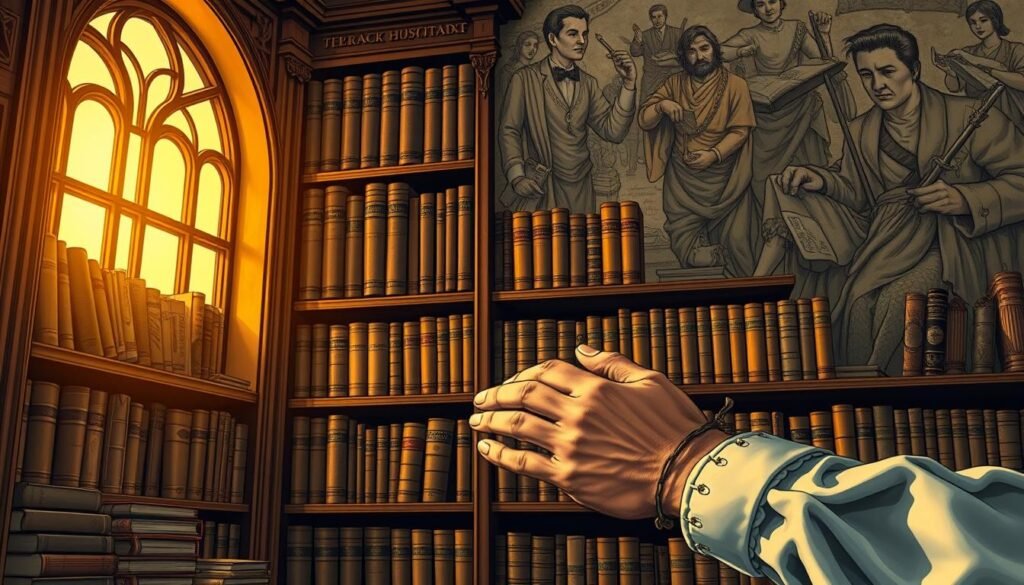
Archiving Classics and Oral Traditions
Archiving plays a crucial role in preserving the richness of Filipino storytelling. Written classics, such as Nick Joaquin’s The Woman Who Had Two Navels, are meticulously cataloged to ensure their longevity. Equally important are oral traditions, which capture the essence of regional cultures and histories.
Initiatives like the National Library of the Philippines and digital archives have made significant strides in this field. These efforts ensure that rare texts and fragile manuscripts are preserved for an audience that spans generations. Digital platforms have further expanded access, allowing a global audience to engage with these works.
The Evolution of Literary Criticism in the Philippines
Literary criticism in the Philippines has evolved to reflect the nation’s dynamic cultural landscape. Early critiques focused on formal analysis, but modern approaches emphasize social and historical contexts. Scholarly articles and critical reviews have played a pivotal role in shaping this field.
Women critics, such as Lualhati Bautista, have made significant contributions by highlighting gender issues and societal norms. Their work has broadened the scope of literary analysis, making it more inclusive and reflective of diverse voices. This evolution has deepened the audience’s understanding of Filipino literature.
“Criticism is not just about evaluating works; it’s about understanding the soul of a nation.”
| Initiative | Focus | Impact |
|---|---|---|
| National Library of the Philippines | Archiving written classics | Preserves historical texts |
| Digital Archives | Digitizing oral traditions | Expands global access |
| Scholarly Articles | Critical analysis | Shapes literary discourse |
These efforts ensure that Filipino literary heritage remains a vibrant and relevant part of the global cultural conversation. To learn more about the importance of preserving literary works, explore this guide to literary preservation.
Conclusion
The post-war era reshaped Filipino storytelling, blending tradition with innovation. This period marked a significant evolution in the material produced, as writers explored themes of identity, resilience, and societal change. The seamless integration of english and native forms created a unique literary dialogue, enriching the cultural landscape.
Historical and thematic shifts defined this literary movement. Writers moved from oral traditions to printed works, embracing new styles while preserving their heritage. This transformation reflects the ongoing dialogue between old and new practices, ensuring that Filipino storytelling remains vibrant and relevant.
For instance, the use of english allowed Filipino authors to reach a global audience, while regional voices added depth to the national narrative. This blend of influences highlights the dynamic nature of the literary category, showcasing its adaptability and enduring impact.
Filipino literature continues to shape cultural identity, offering insights into the nation’s past and present. Its evolution serves as a testament to the power of storytelling in fostering unity and understanding. To explore more about synthesizing literary findings, visit this guide to concluding literature reviews.
FAQ
How did World War II impact Filipino literature?
World War II brought significant political and social changes to the Philippines, which influenced its literary landscape. Writers began to address themes of national identity, trauma, and rebuilding in their works.
What role did literature play in post-war Philippines?
Literature became a powerful tool for social critique and national healing. Authors used their works to reflect on the country’s struggles and to inspire hope for the future.
Who are some influential Filipino authors from the post-war era?
Notable figures include Nick Joaquin, F. Sionil José, and N.V.M. Gonzalez. Their works explored themes of identity, history, and social justice, leaving a lasting impact on Filipino writing.
How did global literary movements influence Filipino literature?
Filipino writers drew inspiration from global movements like modernism and social realism. These influences helped shape new narrative styles and thematic approaches in their works.
What themes are common in post-war Filipino literature?
Common themes include social realism, national identity, and the struggles of everyday life. Writers often used their works to critique societal issues and explore cultural heritage.
How has Filipino literature adapted to modern media?
Filipino literature has transitioned from traditional print to digital platforms. New media has allowed writers to reach wider audiences and experiment with innovative storytelling techniques.
What is the significance of regional voices in Filipino literature?
Regional voices add diversity and depth to Filipino literature. They highlight unique cultural perspectives and traditions, enriching the country’s literary heritage.
How is Filipino literary heritage preserved today?
Efforts include archiving classic works, promoting oral traditions, and fostering literary criticism. These initiatives ensure that Filipino literature remains accessible and relevant for future generations.
What is the role of poetry and drama in Filipino literature?
Poetry and drama have been reimagined to address contemporary issues. These genres continue to serve as powerful mediums for creative expression and social commentary.
How does Filipino literature intersect with global traditions?
Filipino literature engages in transnational dialogues, blending Asian and Western influences. This intersection enriches its themes and narrative styles, making it a vibrant part of world literature.
Source Links
- Philippine literature in English
- DEVELOPMENT OF PHILIPPINE LITERATURE IN ENGLISH
- Philippine Literature in English – National Commission for Culture and the Arts
- July 4, 1946: The Philippines Gained Independence from the United States | The National WWII Museum | New Orleans
- The Philippine Literature and Arts in the Post-War Era (1946-1972)
- Philippine Literature in the Post-War and Contemporary Period – National Commission for Culture and the Arts
- Literary Voice: Developing it…and defining it.
- New Journalism | American Literary Movement, Narrative Style | Britannica
- Is being the ‘voice of a generation’ a curse or an honour for novelists?
- The Literary Forms in Philippine Literature – National Commission for Culture and the Arts
- [OPINION] Appreciating the Filipino identity through our literature and culture
- Philippine literature
- Legendary Filipino Authors
- Greatest Filipino Writers | Pantheon
- Post World War II: Analysis of American literature
- Evolution of US Literature After 1945
- English Poetry After WWII: The Rise and Evolution of Post-War Literature in The UK
- Introduction to Literature (Poetry, Drama, Prose)
- Identifying Prose, Poetry, and Dramas | sofatutor.com
- Comparative Literature, the Transnational, and the Global
- Comparative Literature in an Age of "Globalization"
- jltr1106.pdf
- Preserving Literature in the Digital Age: The Role of E-Publications
- Microsoft Word – Dr. Krishnaprabha
- Writing a Literature Review – Purdue OWL®
- Conclusion Literature, History and Interpretation
- Conclusion – Literature, Science, and Public Policy

